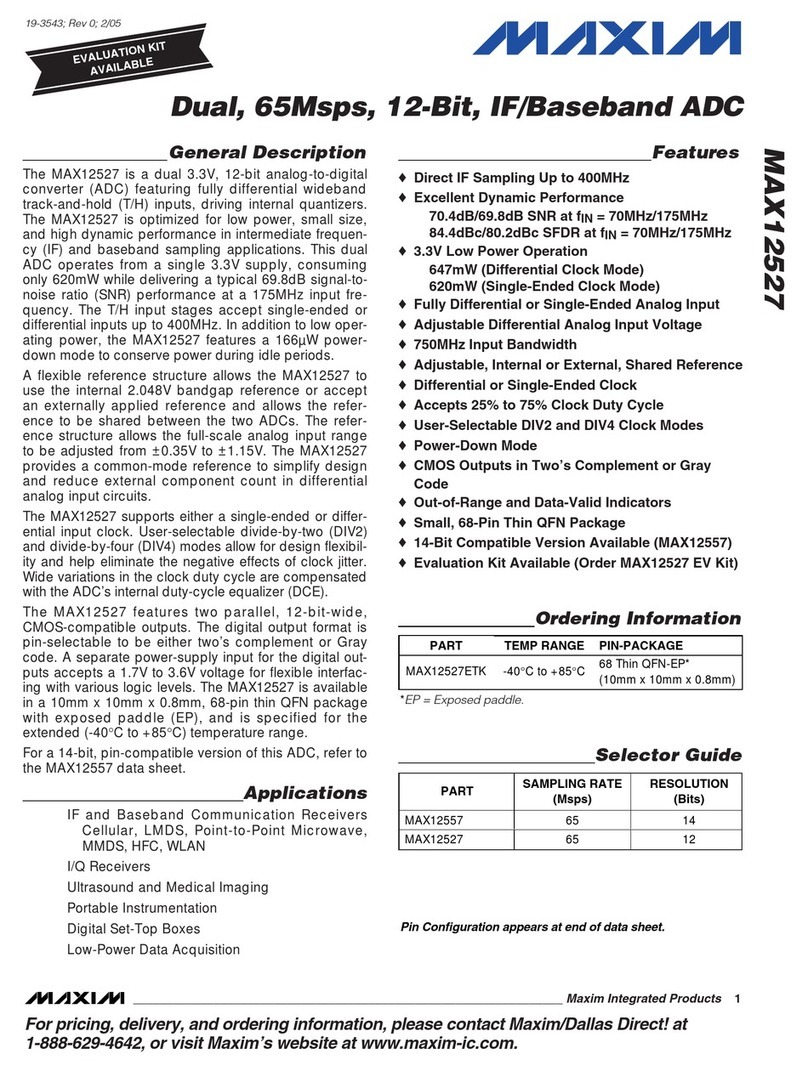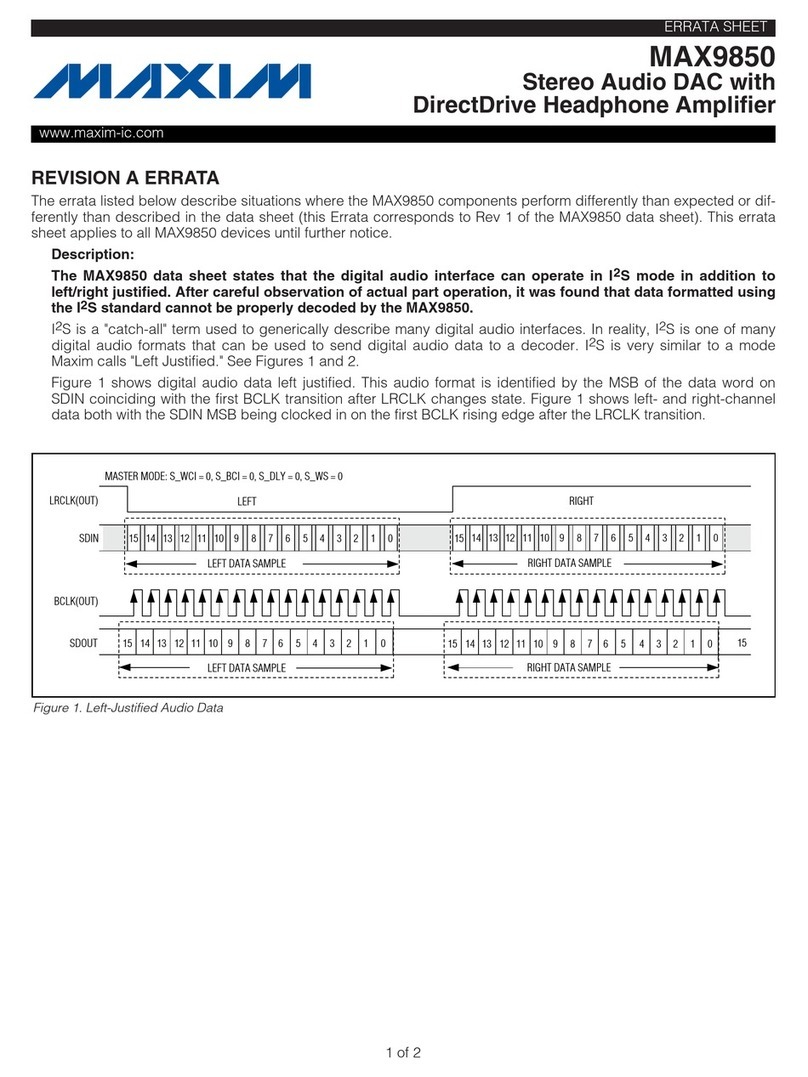General Description
The MAX12557 is a dual 3.3V, 14-bit analog-to-digital
converter (ADC) featuring fully differential wideband
track-and-hold (T/H) inputs, driving internal quantizers.
The MAX12557 is optimized for low power, small size,
and high dynamic performance in intermediate frequen-
cy (IF) and baseband sampling applications. This dual
ADC operates from a single 3.3V supply, consuming
only 610mW while delivering a typical 72.5dB signal-to-
noise ratio (SNR) performance at a 175MHz input fre-
quency. The T/H input stages accept single-ended or
differential inputs up to 400MHz. In addition to low oper-
ating power, the MAX12557 features a 166µW power-
down mode to conserve power during idle periods.
A flexible reference structure allows the MAX12557 to
use the internal 2.048V bandgap reference or accept
an externally applied reference and allows the refer-
ence to be shared between the two ADCs. The refer-
ence structure allows the full-scale analog input range
to be adjusted from ±0.35V to ±1.15V. The MAX12557
provides a common-mode reference to simplify design
and reduce external component count in differential
analog input circuits.
The MAX12557 supports either a single-ended or differ-
ential input clock. User-selectable divide-by-two (DIV2)
and divide-by-four (DIV4) modes allow for design flexibil-
ity and help eliminate the negative effects of clock jitter.
Wide variations in the clock duty cycle are compensated
with the ADC’s internal duty-cycle equalizer (DCE).
The MAX12557 features two parallel, 14-bit-wide,
CMOS-compatible outputs. The digital output format is
pin-selectable to be either two’s complement or Gray
code. A separate power-supply input for the digital out-
puts accepts a 1.7V to 3.6V voltage for flexible interfac-
ing with various logic levels. The MAX12557 is available
in a 10mm x 10mm x 0.8mm, 68-pin thin QFN package
with exposed paddle (EP), and is specified for the
extended (-40°C to +85°C) temperature range.
For a 12-bit, pin-compatible version of this ADC, refer to
the MAX12527 data sheet.
Applications
IF and Baseband Communication Receivers
Cellular, LMDS, Point-to-Point Microwave,
MMDS, HFC, WLAN
I/Q Receivers
Ultrasound and Medical Imaging
Portable Instrumentation
Digital Set-Top Boxes
Low-Power Data Acquisition
Features
♦Direct IF Sampling Up to 400MHz
♦Excellent Dynamic Performance
74.1dB/72.5dB SNR at fIN = 70MHz/175MHz
83.4dBc/79.5dBc SFDR at fIN = 70MHz/175MHz
♦3.3V Low-Power Operation
637mW (Differential Clock Mode)
610mW (Single-Ended Clock Mode)
♦Fully Differential or Single-Ended Analog Input
♦Adjustable Differential Analog Input Voltage
♦750MHz Input Bandwidth
♦Adjustable, Internal or External, Shared Reference
♦Differential or Single-Ended Clock
♦Accepts 25% to 75% Clock Duty Cycle
♦User-Selectable DIV2 and DIV4 Clock Modes
♦Power-Down Mode
♦CMOS Outputs in Two’s Complement or Gray
Code
♦Out-of-Range and Data-Valid Indicators
♦Small, 68-Pin Thin QFN Package
♦12-Bit Compatible Version Available (MAX12527)
♦Evaluation Kit Available (Order MAX12557 EV Kit)
MAX12557
Dual, 65Msps, 14-Bit, IF/Baseband ADC
________________________________________________________________ Maxim Integrated Products 1
Ordering Information
19-3544; Rev 0; 2/05
For pricing, delivery, and ordering information, please contact Maxim/Dallas Direct! at
1-888-629-4642, or visit Maxim’s website at www.maxim-ic.com.
EVALUATION KIT
AVAILABLE





























